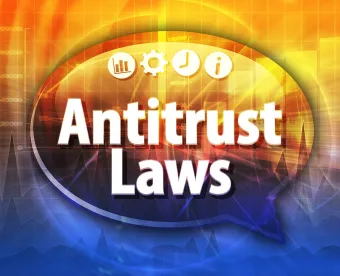The 2004 U.S. Supreme Court decision in Trinko is generally understood to mean that an incumbent local exchange company is not obligated under the antitrust laws to open its network to a competitor.[1] In the context of recent FCC decisions, it is noteworthy that Justice Scalia’s opinion in Trinko was grounded on the fact that the “regulatory framework that exists in this case demonstrates how, in certain circumstances regulation significantly diminishes the likelihood of major antitrust harm.”[2]
This regulatory framework no longer applies for the Nation’s most significant telecommunications-related market, high speed Internet access service. The FCC’s Restoring Internet Freedom Order adopted in December 2017 held that the Commission does not have jurisdiction over high speed Internet access services, including wireless broadband services provided by CMRS providers.[3]
The Telecommunications Act of 1996 (1996 Act) sought to “promote competition and reduce regulation in order to secure lower prices and higher quality services for American telecommunications consumers and encourage the rapid deployment of new telecommunications technology.”[4] The 1996 Act left undisturbed the application of the antitrust laws to telecommunications.[5] But, subsequent antitrust analysis and litigation have been highly influenced by the FCC’s expansive regulatory system even after enactment of the Telecommunications Act of 1996 explicitly directed that the antitrust laws be applied to telecommunications, with Trinko as a leading example.
The Restoring Internet Freedom Order means that FCC decisions are of limited precedential value and prior court decisions must be reassessed. Opponents of the FCC’s reclassification of broadband cited Trinko as posing obstacles to meaningful antitrust remedies and the Commission cited Trinko in its Order, but the implications of the Commission’s Order regarding the effect of prior judicial precedent was not addressed.[6]
The Commission’s decision requires reevaluation of Trinko. Absent any Commission regulation under Title II of the Communications Act, a key element supporting the court’s conclusions is absent. It is an open question whether the Justice Department’s acquiescence to wireline and wireless mergers over the last twenty (20) years is relevant for assessing the business practices of the major broadband providers, particularly the four nationwide mobile broadband service providers (that may be reduced to three if the T-Mobile/Sprint merger is approved). Any antitrust challenge to wireless broadband services providers, will be judged under the rule of reason, focusing principally on the adverse impacts on the downstream market (end-user customers).
Most antitrust claims are evaluated under the “rule of reason,” which is a case-by-case inquiry into all the circumstances to assess whether a particular activity or arrangement lessens competition. Typically, plaintiffs need to demonstrate that defendants with market power have engaged in anticompetitive conduct. To conclude that a practice is “reasonable” means it survives antitrust scrutiny, in contrast to a “per se” offense for which the activity is presumed to be anticompetitive and illegal, as with price fixing. The rule of reason assessment permits a defendant to justify allegedly anti-competitive practices by demonstrating valid procompetitive justifications.[7]
If the Restoring Internet Freedom Order is affirmed on appeal, major broadband providers may well find the antitrust laws not as accommodating as anticipated.
[1] Verizon Communications v. Law Offices of Curtis V. Trinko, LLP, 540 U.S. 398 (2004) (Trinko).
[2] Trinko, supra, 540 U.S. at 412.
[3] In the Matter of Restoring Internet Freedom, Declaratory Ruling, Report and Order, and Order, WC Docket No. 17-108, ¶¶ 86-123 and 143-154 (Dec. 14, 2017).
[4] Preamble to the Telecommunications Act of 1996, 47 U.S.C. §§ 151, et seq.
[5] The 1996 Act contains a Savings Clause and an No Implied Effect Clause, see, § 601(b)(1) and (c)(1). “[N]oting in this Act of the amendments made by this Act shall be construed to modify, impair, or supersede the applicability of any of the antitrust laws.”
[6] Restoring Internet Freedom Order, note 556.
[7] Eastman Kodak Co. v. Image Tech. Services, 504 U.S. 451, 461-462 (1992). The Trinko decision did not fault Verizon’s refusal to deal under precedent existing in 2004, and under the essential facilities doctrine, which is recognized by several federal courts of appeals, but not explicitly by the Supreme Court. Trinko, supra, 540 U.S. at 408-411.



 />i
/>i

